#sebasteion
Explore tagged Tumblr posts
Text

Claudius subduing Britannia, a panel from the Sebasteion, a temple dedicated to the Julio-Claudian dynasty in Aphrodisias, in the Roman province of Caria.
#ancient rome#roman empire#ancient art#ancient history#emperor claudius#julio claudian dynasty#ancient culture#ancient civilisations#statue#claudius' conquest of britain#claudius#sebasteion
34 notes
·
View notes
Text

Today's Flickr photo with the most hits: taken in the museum at Aphrodisias, Turkiye. One of the bas-reliefs from the monumental decorative frieze of the Sebasteion, showing Aeneas fleeing Troy.
3 notes
·
View notes
Text

The Sebasteion, discovered in southwestern Türkiye in 1979, was a majestic temple dedicated to the emperors of Julio-Claudian dynasty and was decorated with a lavish sculptural program of which much survives.
733 notes
·
View notes
Photo

Nike
Roman Sebasteion relief sculpture a winged goddess Victory (Nike)
Aphrodisias Museum, Aphrodisias, Turkey
3 notes
·
View notes
Text
Welterbe (auf)gespürt und (er)fahren - TR - Aphrodisias

Die Stadt Aphrodisias und ihre Marmorbrüche stehen seit 2017 auf der UNESCO-Welterbeliste. Aphrodisias wurde im frühen 2. Jahrh. v. Chr. als Stadtstaat gegründet. Der Aphrodite-Kult war der wichtigste Kult in der Stadt, der Tempel mit der markanten Kultstatue der Göttin Aphrodite spielte eine zentrale Rolle. Die Aphrodite von Aphrodisias kombinierte Aspekte der lokalen archaischen Fruchtbarkeitsgöttin mit denen der hellenischen Göttin der Liebe und Schönheit. Die Stadt teilte den Kult mit Sulla, Julius Cäsar und dem Kaiser Augustus. Sie erhielt vom römischen Senat einen privilegierten Status und entwickelte sich während der Kaiserzeit, befördert durch die nahe gelegenen Marmorsteinbrüche, zu einem künstlerischen und bildhauerischen Zentrum. So entstanden viele kunstvoll verzierte Bauwerke und Marmorskulpturen. Die Fähigkeiten der aphrodisischen Bildhauer waren im gesamten Reich und besonders auch in Rom gefragt, wo sie einige der schönsten erhaltenen Werke schufen, z.B. in Hadrians Villa in Tivoli. Am Beginn des Rundgangs stehen eine Reihe kunstvoller Sarkophage, Skulpturen und Reliefs.

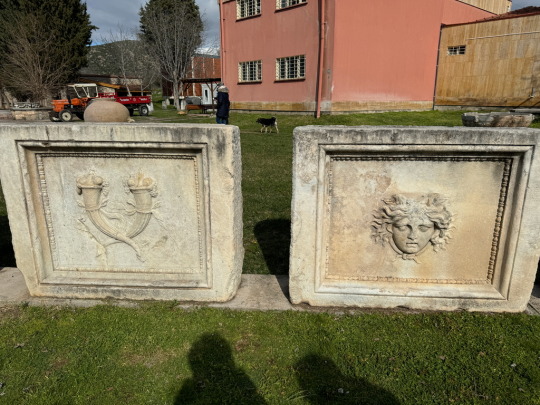

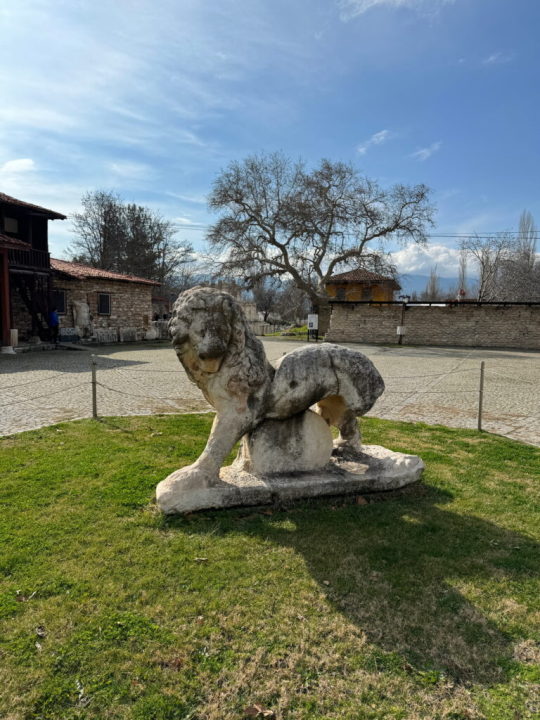
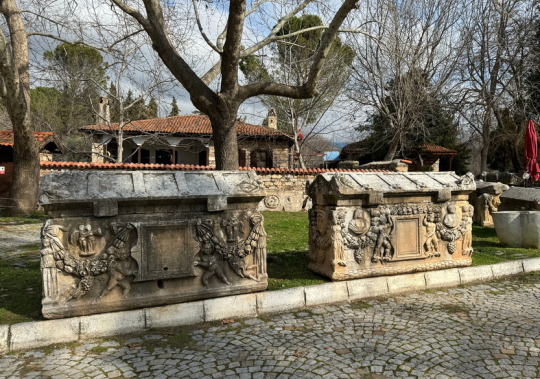
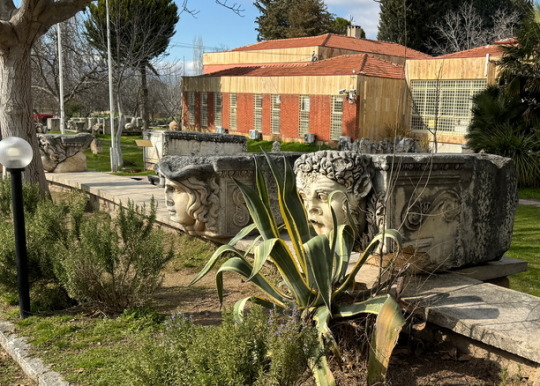


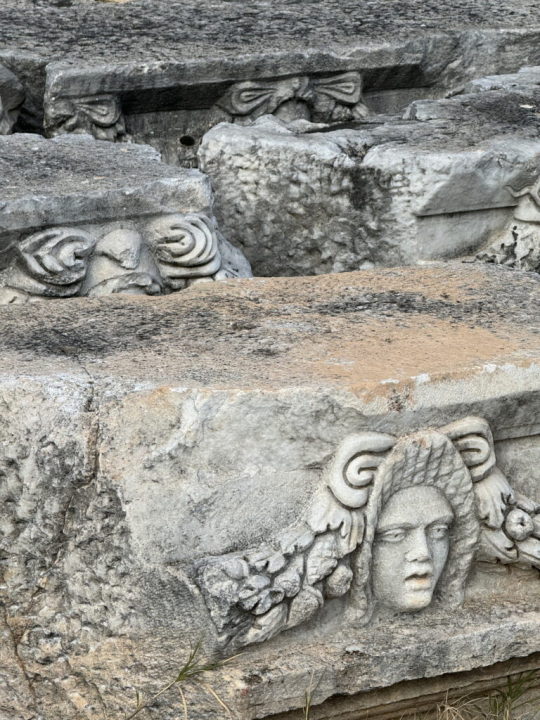
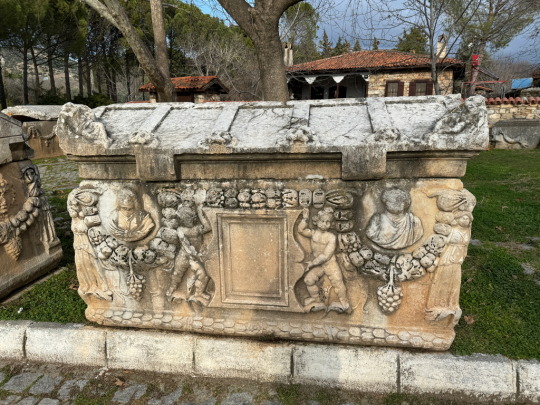


Lagepläne geben Auskunft über die benachbarten Marmorsteinbrüche und die Objekte in der Ausgrabungsstätte. Quelle : http://www.aphrodisias.org.uk/ Von den ehemals rechtwinklig angelegten Straßen ist nur noch wenig zu erahnen, doch das reich verzierte Tormonument, das Tetrapylon, steht weithin sichtbar am eingang der Stadt.
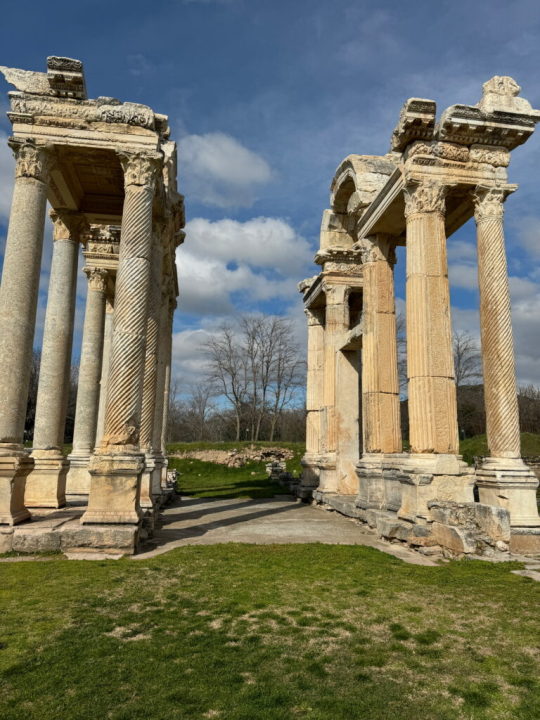

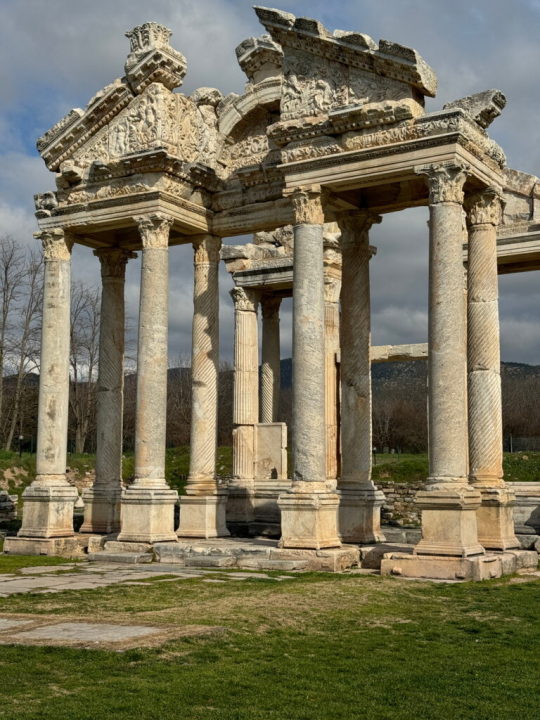
Die Stadt besaß ein sehr großes Stadion und ein beeindruckendes Theater.
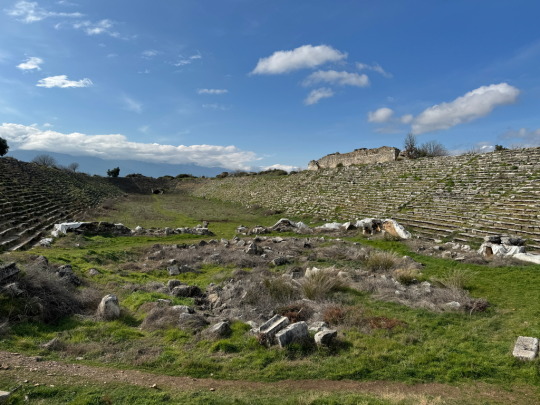

Die Bedeutung der Aphrodite von Aphrodisias reichte noch weit bis ins Christentum, ihr Tempel wurde erst um 500 n. Chr. zur Kirche umgebaut. Von beiden sind noch Ruinen zu sehen.

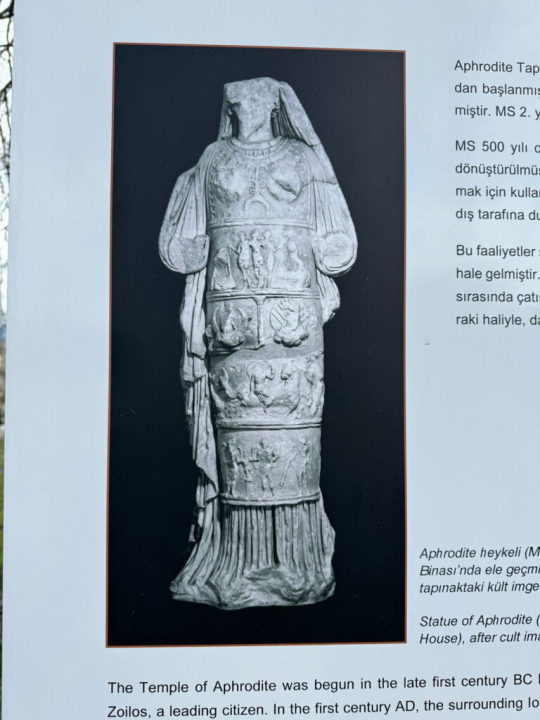

Auch hier gab es eine hervorragende Badekultur, wovon die Bäder des Hadrian zeugen. Der Boden des großen Bassins war reich mit Mosaiken verziert.

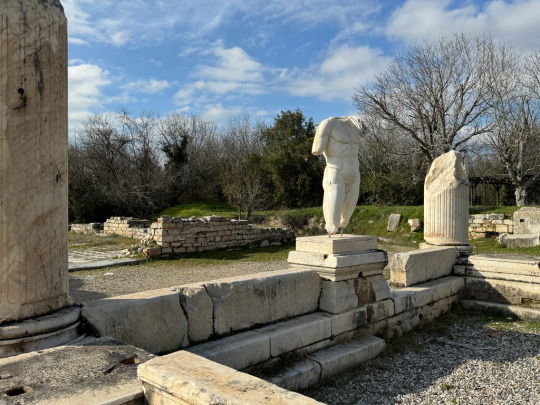
Die Frühlingssonne scheint warm, doch in der Ferne sind noch die schneebedeckten Berge zu sehen.
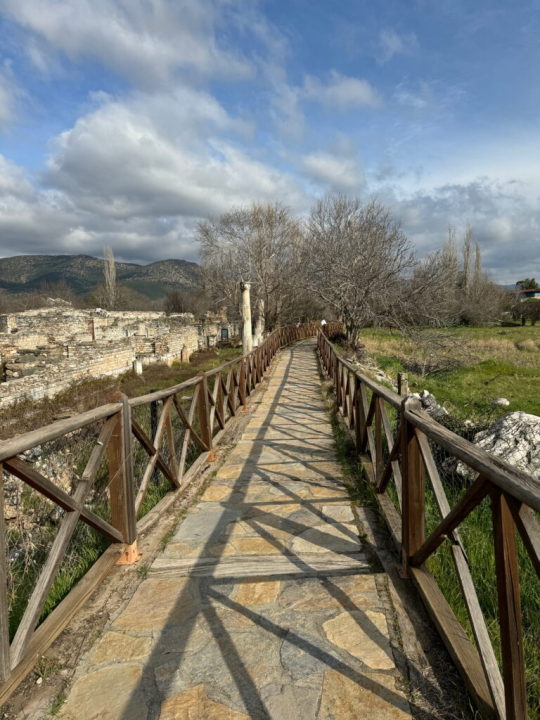

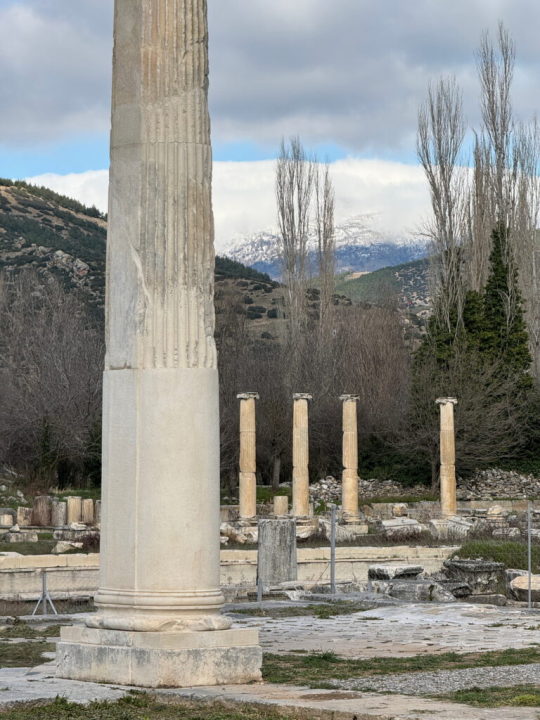
Die Besichtigungstour endet am Sebasteion, einem wunderschönen Gebäude, das dem Kaiserkult gewidmet war. Wer mer sehen möchteh, kann auch noch das Museum besuchen.
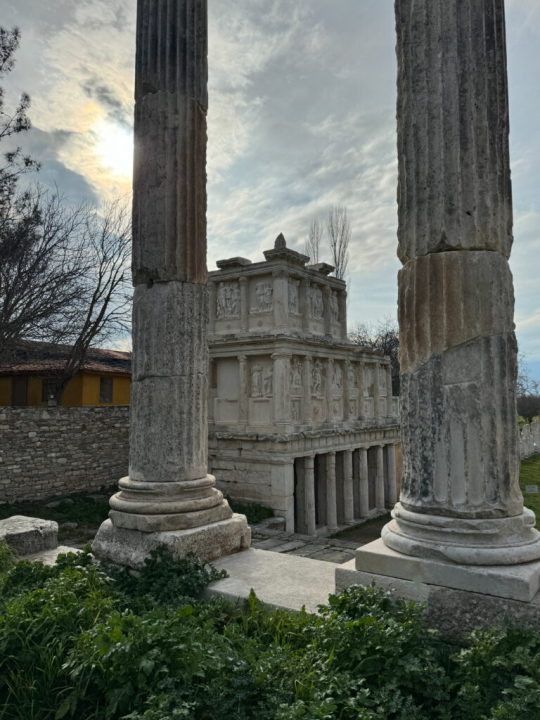

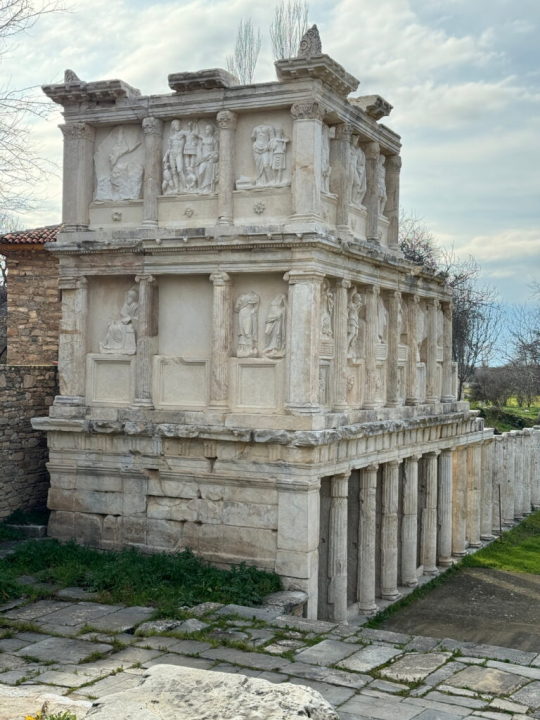
Resümee
Aphrodisias ist eine äußerst interessante Ausgrabungsstätte mit einer langen Geschichte. Hier gibt es eine Vielzahl wunderschöner Marmorreliefs und Skulpturen zu bewundern. Besonders bemerkenswert fand ich, dass sich hier der Ursprung vieler Meisterwerke befindet, die der eine oder andere so wie ich in den antiken Stätten in und um Rom bereits sehen konnte. Read the full article
#Ägäis#Aphrodisias#Besichtigung#Erfahrungsbericht#Erkundung#Europa#Inspiration#Reisebericht#Reisefotografie#Reisetagebuch#Reiseziele#RSD-Studienreise#Rundfahrt#Rundreise#Sehenswürdigkeit#Städtereise#Türkei#UNESCO-Welterbe#unterwegs#Urlaubplanen
0 notes
Text
tbh the Sebasteion is my journal
lil’ pagan tip/idea- dedicate a journal to your deity!
a journal can be useful for a lot of reasons. not only it is an easy way to feel closer to your deity or deities, but it can be super convenient if you’re a person who travels a lot or need to worship in secret.
things to write or put in your journal could include:
prayers
pressed flowers/leaves/herbs
sketches or doodles of things that remind you of them
devotional poems or art pieces
song lyrics
experiences you’ve had with them
dreams they’ve sent you
recipes
stickers
spells / rituals (especially ones you have done or would want to do with them)
photos
notes on offerings and devotional acts
list of crystals, herbs, colors, etc. you associate with them
and these are only a few ideas :)
the journal can also work as a mini-altar that you can put offerings on! since taking care of myself is one of the ways i honor my deity, sometimes i’ll place a glass of water or juice on the journal i have and i can keep it next to me to sip from while i’m doing something. again this can be really helpful if you travel a lot, worship discreetly, or if you don’t have a lot of space for a full altar.
additionally, you can dedicate a few pens or markers to your deity too (because everything is better with fun colors!)
3K notes
·
View notes
Text



~ Nero and Agrippina Minor, relief from the Sebasteion at Aphrodisias.
Date: A.D. 54-58
Medium: Marble
Provenience: Aphrodisias, Archaeological Museum
#ancient#ancient art#ancient sculpture#ancient statue#ancient history#history#archeology#museum#art#statue#sculpture#nero and agrippina Minor#nero#agrippina#sebasteion#aphrodisias#marble#a d. 54#a d. 58#1st century#mid 1st century
764 notes
·
View notes
Photo

Aphrodisias: Sebasteion; Augustus Sebastos (or Claudius?)
“The deified Roman emperor Augustus Sebastos as he was depicted in the Sebasteion (shrine to the imperial cult) at Aphrodisias, Turkey. Note that the museum at Aphrodisias identifies this figure as the emperor Claudius. Shown in a dynamic pose, with Greek-inspired heroic nudity, the highly idealized representation of the emperor is flanked by allegorical beings that represent land (left) and sea (right), the former lifting a cornucopia and the latter a ship’s rudder. Now in the museum at Aphrodisias. Dated to the first century C.E.”
5 notes
·
View notes
Photo









2020 October 29 - Aphrodisias
#aphrodisias museum#greek mythology#ancient rome#ancient history#history#city#ancient#reliefs#art#ancient world#unesco#unesco world heritage site#museum#gods and heroes#mythology#sebasteion#aphrodisias#faces of aphrodisias
12 notes
·
View notes
Text
Sometimes I wonder what people are on in order to come up with the craziest theories
#this is related to portrait identification#I have a presentation about the Aphrodisian Sebasteion reliefs of the Julio-Claudians#and boy there's one article and you just think#How the F did you come up with this?#like there are two unidentified portraits of princes and this author suggests Britannicus and Cornelius Sulla#the son of Claudia Antonia - who never has been names#cause -oh boy wait for it - died as a toddler with no possibility of becoming an heir#and therefore has no place in a provincial cult monument dedicated to heirs#successors and emperors of the Julio-claudians#I am just mad I read this article to be honest#rant#classical archaeology
6 notes
·
View notes
Photo

Aphrodisias
Tinatin Mangasarian photo
Stalked Heads of Aphrodisias (Roman city founded on the site of a rural sanctuary of Aphrodite). Today Turkey.
Known as the most magnificent of the cities dedicated to Aphrodite, the goddess of love and beauty in mythology, Aphrodisias took its place among the best sculptor centers of the Roman period. The city pool, Tetrapylon Gate, Sebasteion Temple, ancient theater, bath, and especially the stadium which have had a maximum capacity for around 30,000 spectators, are the areas that attract the most attention in the ancient city.
https://web.facebook.com/athenologio/posts/pfbid06mQfEHcAGWMVuo1JXbTCoMvivgHffPQ11brjeTjPRRAEyXtbVAhZfi28dfsBCAhbl
83 notes
·
View notes
Text

Agrippina crowning her son Nero, Sebasteion, Aphrodisias, modern Turkey.
#nero#emperor nero#agrippina#agrippina the younger#agrippina minor#ancient rome#roman empire#roman history#ancient history#ancient culture#ancient art#julio claudian dynasty#antiquity
321 notes
·
View notes
Text
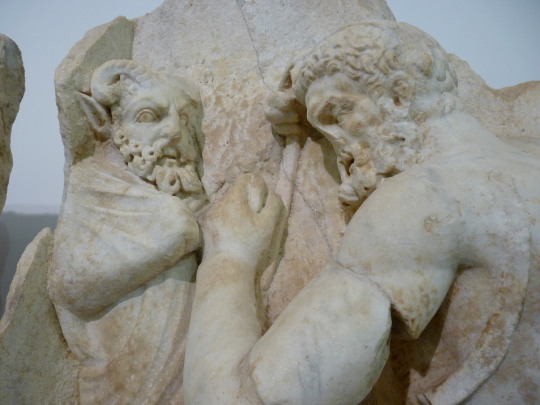
Today's Flickr photo with the most hits: Hercules prepares to wrestle Antaios; he hangs his cloak up on a herm, depicting Pan, before the bout.
4 notes
·
View notes
Text




Sebasteion, Aphrodisias (1st century) Turkey, dedicated to the Imperial Sebastos, a Greek name for the Roman Emperor Augustus. It was covered with mythological reliefs and Roman emperors. With this monument we wanted to highlight the divine origin of the Julio-Claudian dynasty.
372 notes
·
View notes
Text

Khairete! Salvete!
My name is Origen. Welcome to the Sebasteion, my online home away from home, which is primarily oriented around my cultic practice with the Theoi Sebastoi/Divi Imperii (deified Roman Emperors) within the religion of Byzantine Paganism. As a Byzantine Pagan I also serve as a priest of the Sebastoi within the Classical Church of Byzantium Novum.
I am a “cis” male of 27, and have been ‘working with’ (I know, I know) the Divine Emperors for the last twelve or so years — about as long as the revived Empire itself has been around. If you’re curious as to what exactly I mean by “deified Roman Emperors” up there, by the way, you can read this. I am also oathed to the Emperors as a godslave — like godspouses, but bet— different.
I don’t believe in DNIs as I reserve the right to mock goons and their nonsense; including but not limited to racialists, radicals, and people who whine about the colonialist proclivities of the Roman Empire. The sole exception to this is persons — and they do exist — who dismiss, profane, or insult the Imperial Cult writ large. Such persons will be castigated bitterly and then blocked.
Pax et bonum!
(h/t Aterios for the user box)
9 notes
·
View notes
Photo

Io
Io and Argos, Roman Sebasteion relief sculpture
Aphrodisias Museum, Aphrodisias, Turkey
4 notes
·
View notes